Alexander Kolesnikov
Dima
Gemma 3 Technical Report
Mar 25, 2025Abstract:We introduce Gemma 3, a multimodal addition to the Gemma family of lightweight open models, ranging in scale from 1 to 27 billion parameters. This version introduces vision understanding abilities, a wider coverage of languages and longer context - at least 128K tokens. We also change the architecture of the model to reduce the KV-cache memory that tends to explode with long context. This is achieved by increasing the ratio of local to global attention layers, and keeping the span on local attention short. The Gemma 3 models are trained with distillation and achieve superior performance to Gemma 2 for both pre-trained and instruction finetuned versions. In particular, our novel post-training recipe significantly improves the math, chat, instruction-following and multilingual abilities, making Gemma3-4B-IT competitive with Gemma2-27B-IT and Gemma3-27B-IT comparable to Gemini-1.5-Pro across benchmarks. We release all our models to the community.
Jet: A Modern Transformer-Based Normalizing Flow
Dec 19, 2024



Abstract:In the past, normalizing generative flows have emerged as a promising class of generative models for natural images. This type of model has many modeling advantages: the ability to efficiently compute log-likelihood of the input data, fast generation and simple overall structure. Normalizing flows remained a topic of active research but later fell out of favor, as visual quality of the samples was not competitive with other model classes, such as GANs, VQ-VAE-based approaches or diffusion models. In this paper we revisit the design of the coupling-based normalizing flow models by carefully ablating prior design choices and using computational blocks based on the Vision Transformer architecture, not convolutional neural networks. As a result, we achieve state-of-the-art quantitative and qualitative performance with a much simpler architecture. While the overall visual quality is still behind the current state-of-the-art models, we argue that strong normalizing flow models can help advancing research frontier by serving as building components of more powerful generative models.
JetFormer: An Autoregressive Generative Model of Raw Images and Text
Nov 29, 2024



Abstract:Removing modeling constraints and unifying architectures across domains has been a key driver of the recent progress in training large multimodal models. However, most of these models still rely on many separately trained components such as modality-specific encoders and decoders. In this work, we further streamline joint generative modeling of images and text. We propose an autoregressive decoder-only transformer - JetFormer - which is trained to directly maximize the likelihood of raw data, without relying on any separately pretrained components, and can understand and generate both text and images. Specifically, we leverage a normalizing flow model to obtain a soft-token image representation that is jointly trained with an autoregressive multimodal transformer. The normalizing flow model serves as both an image encoder for perception tasks and an image decoder for image generation tasks during inference. JetFormer achieves text-to-image generation quality competitive with recent VQ-VAE- and VAE-based baselines. These baselines rely on pretrained image autoencoders, which are trained with a complex mixture of losses, including perceptual ones. At the same time, JetFormer demonstrates robust image understanding capabilities. To the best of our knowledge, JetFormer is the first model that is capable of generating high-fidelity images and producing strong log-likelihood bounds.
PaliGemma: A versatile 3B VLM for transfer
Jul 10, 2024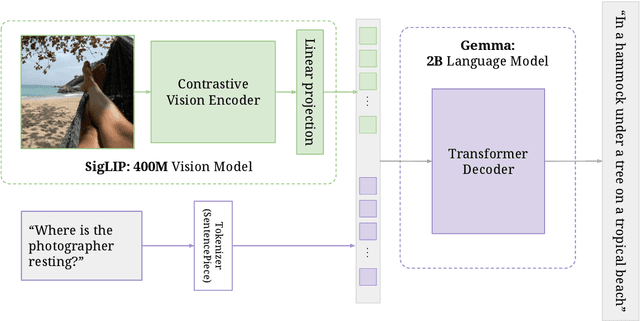
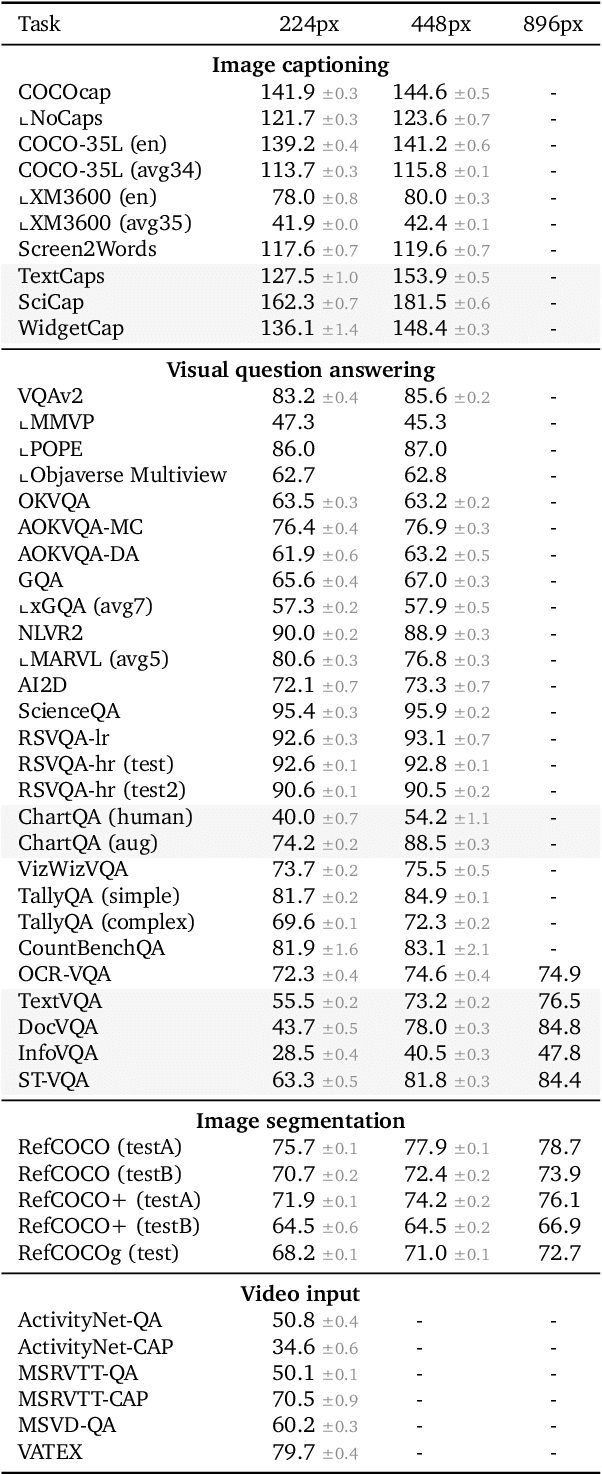
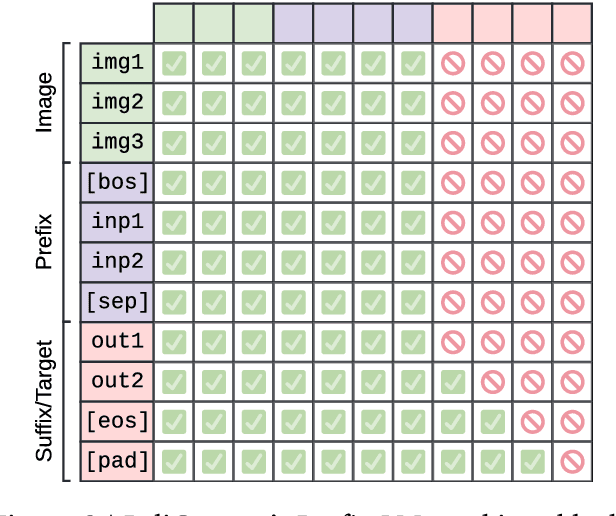
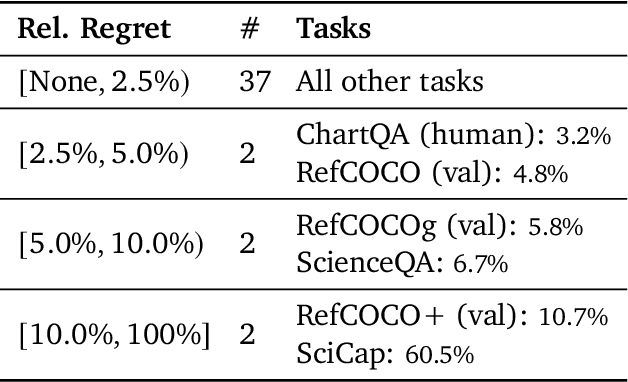
Abstract:PaliGemma is an open Vision-Language Model (VLM) that is based on the SigLIP-So400m vision encoder and the Gemma-2B language model. It is trained to be a versatile and broadly knowledgeable base model that is effective to transfer. It achieves strong performance on a wide variety of open-world tasks. We evaluate PaliGemma on almost 40 diverse tasks including standard VLM benchmarks, but also more specialized tasks such as remote-sensing and segmentation.
Toward a Diffusion-Based Generalist for Dense Vision Tasks
Jun 29, 2024



Abstract:Building generalized models that can solve many computer vision tasks simultaneously is an intriguing direction. Recent works have shown image itself can be used as a natural interface for general-purpose visual perception and demonstrated inspiring results. In this paper, we explore diffusion-based vision generalists, where we unify different types of dense prediction tasks as conditional image generation and re-purpose pre-trained diffusion models for it. However, directly applying off-the-shelf latent diffusion models leads to a quantization issue. Thus, we propose to perform diffusion in pixel space and provide a recipe for finetuning pre-trained text-to-image diffusion models for dense vision tasks. In experiments, we evaluate our method on four different types of tasks and show competitive performance to the other vision generalists.
PaLI-3 Vision Language Models: Smaller, Faster, Stronger
Oct 17, 2023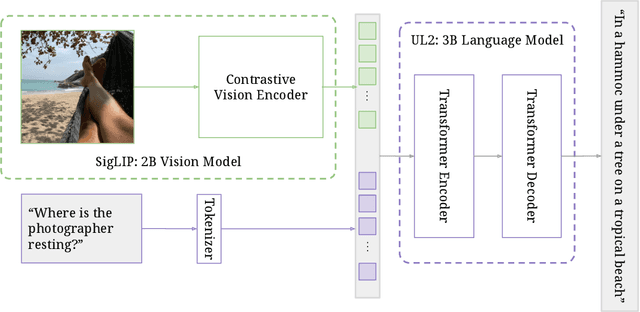

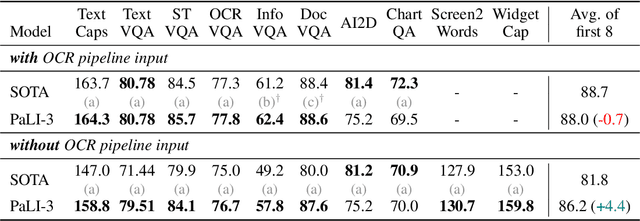
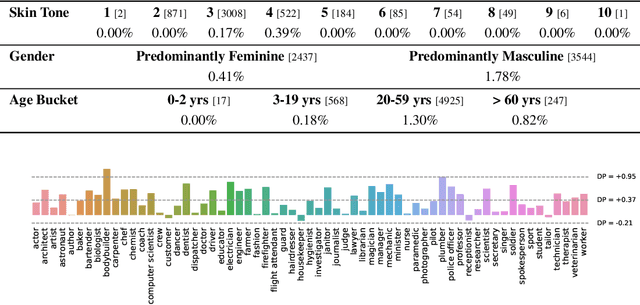
Abstract:This paper presents PaLI-3, a smaller, faster, and stronger vision language model (VLM) that compares favorably to similar models that are 10x larger. As part of arriving at this strong performance, we compare Vision Transformer (ViT) models pretrained using classification objectives to contrastively (SigLIP) pretrained ones. We find that, while slightly underperforming on standard image classification benchmarks, SigLIP-based PaLI shows superior performance across various multimodal benchmarks, especially on localization and visually-situated text understanding. We scale the SigLIP image encoder up to 2 billion parameters, and achieves a new state-of-the-art on multilingual cross-modal retrieval. We hope that PaLI-3, at only 5B parameters, rekindles research on fundamental pieces of complex VLMs, and could fuel a new generation of scaled-up models.
PaLI-X: On Scaling up a Multilingual Vision and Language Model
May 29, 2023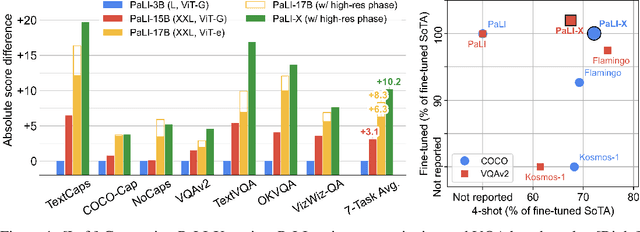

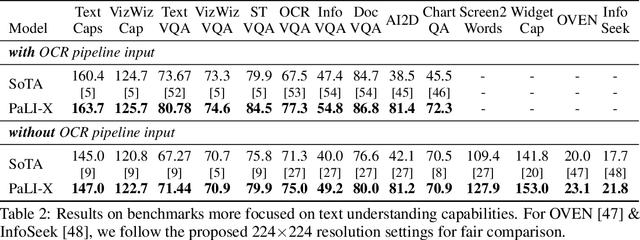
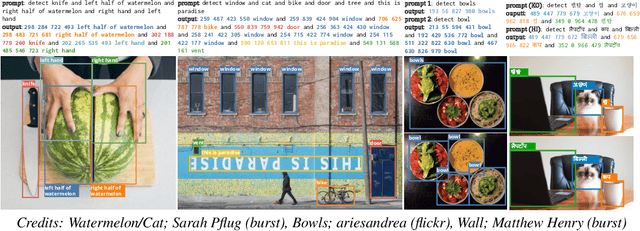
Abstract:We present the training recipe and results of scaling up PaLI-X, a multilingual vision and language model, both in terms of size of the components and the breadth of its training task mixture. Our model achieves new levels of performance on a wide-range of varied and complex tasks, including multiple image-based captioning and question-answering tasks, image-based document understanding and few-shot (in-context) learning, as well as object detection, video question answering, and video captioning. PaLI-X advances the state-of-the-art on most vision-and-language benchmarks considered (25+ of them). Finally, we observe emerging capabilities, such as complex counting and multilingual object detection, tasks that are not explicitly in the training mix.
Getting ViT in Shape: Scaling Laws for Compute-Optimal Model Design
May 22, 2023



Abstract:Scaling laws have been recently employed to derive compute-optimal model size (number of parameters) for a given compute duration. We advance and refine such methods to infer compute-optimal model shapes, such as width and depth, and successfully implement this in vision transformers. Our shape-optimized vision transformer, SoViT, achieves results competitive with models that exceed twice its size, despite being pre-trained with an equivalent amount of compute. For example, SoViT-400m/14 achieves 90.3% fine-tuning accuracy on ILSRCV2012, surpassing the much larger ViT-g/14 and approaching ViT-G/14 under identical settings, with also less than half the inference cost. We conduct a thorough evaluation across multiple tasks, such as image classification, captioning, VQA and zero-shot transfer, demonstrating the effectiveness of our model across a broad range of domains and identifying limitations. Overall, our findings challenge the prevailing approach of blindly scaling up vision models and pave a path for a more informed scaling.
Capturing dynamical correlations using implicit neural representations
Apr 08, 2023Abstract:The observation and description of collective excitations in solids is a fundamental issue when seeking to understand the physics of a many-body system. Analysis of these excitations is usually carried out by measuring the dynamical structure factor, S(Q, $\omega$), with inelastic neutron or x-ray scattering techniques and comparing this against a calculated dynamical model. Here, we develop an artificial intelligence framework which combines a neural network trained to mimic simulated data from a model Hamiltonian with automatic differentiation to recover unknown parameters from experimental data. We benchmark this approach on a Linear Spin Wave Theory (LSWT) simulator and advanced inelastic neutron scattering data from the square-lattice spin-1 antiferromagnet La$_2$NiO$_4$. We find that the model predicts the unknown parameters with excellent agreement relative to analytical fitting. In doing so, we illustrate the ability to build and train a differentiable model only once, which then can be applied in real-time to multi-dimensional scattering data, without the need for human-guided peak finding and fitting algorithms. This prototypical approach promises a new technology for this field to automatically detect and refine more advanced models for ordered quantum systems.
A Study of Autoregressive Decoders for Multi-Tasking in Computer Vision
Mar 30, 2023



Abstract:There has been a recent explosion of computer vision models which perform many tasks and are composed of an image encoder (usually a ViT) and an autoregressive decoder (usually a Transformer). However, most of this work simply presents one system and its results, leaving many questions regarding design decisions and trade-offs of such systems unanswered. In this work, we aim to provide such answers. We take a close look at autoregressive decoders for multi-task learning in multimodal computer vision, including classification, captioning, visual question answering, and optical character recognition. Through extensive systematic experiments, we study the effects of task and data mixture, training and regularization hyperparameters, conditioning type and specificity, modality combination, and more. Importantly, we compare these to well-tuned single-task baselines to highlight the cost incurred by multi-tasking. A key finding is that a small decoder learned on top of a frozen pretrained encoder works surprisingly well. We call this setup locked-image tuning with decoder (LiT-decoder). It can be seen as teaching a decoder to interact with a pretrained vision model via natural language.
 Add to Chrome
Add to Chrome Add to Firefox
Add to Firefox Add to Edge
Add to Edge